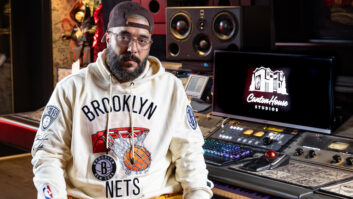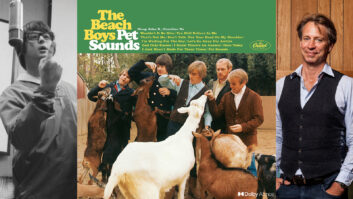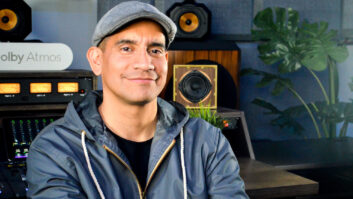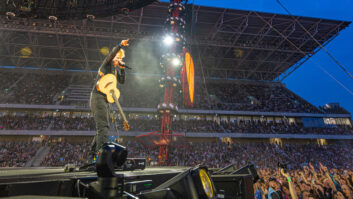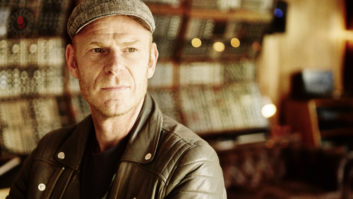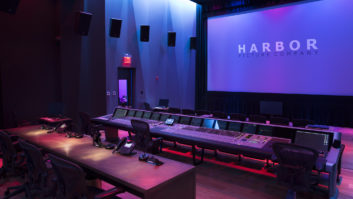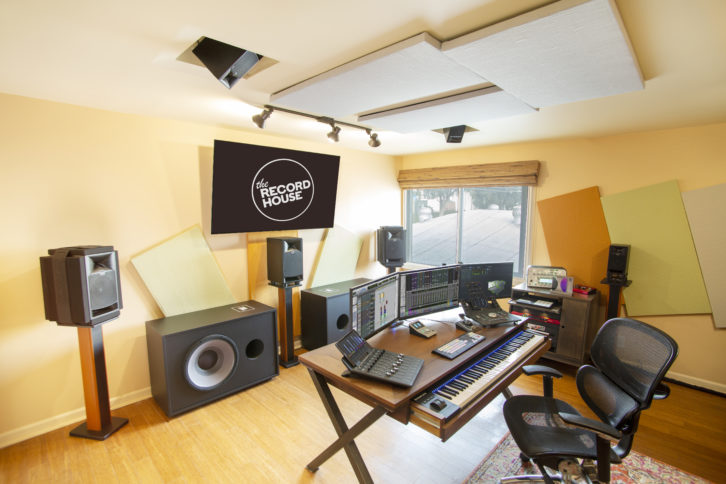
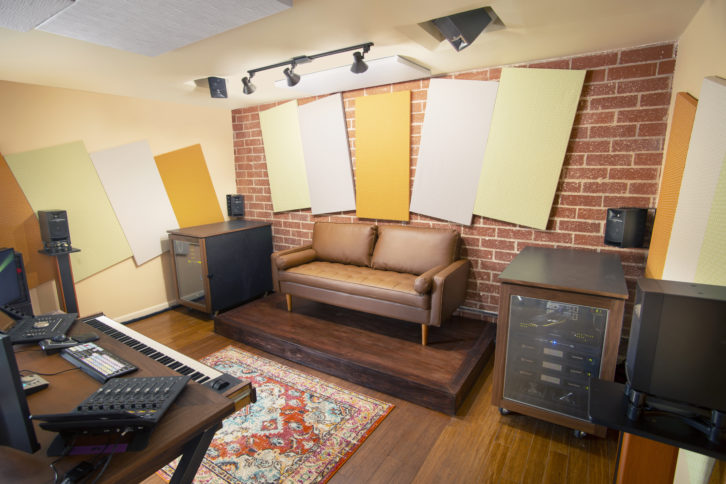
On the one hand, Mert Ozcan was about as unlucky as a new studio owner could be. It was early March 2020, and he was finishing up fabrics and tweaks on a new Dolby Atmos room at The Record House, a facility he had opened four years earlier with a single 5.1 room inside the Sonic Fuel complex in El Segundo, Calif., run by composers Christopher Lennertz and Timothy Michael Wynn.
A space had opened up the previous Fall when a composer decided to leave the facility, and, having looked to the near future, Ozcan decided the time was right to fast-track the construction of a certified 7.1.4 Dolby Atmos mix room. He didn’t want to be late to the party; he wanted to be one of the first guests to arrive. Everything was going better than expected.
Then four days later the virus hit, and the shutdown orders brought all business to a screeching halt.
On the other hand, if there is such a thing as a “silver lining” over these past 10 months, the slowdown has allowed Ozcan time to educate himself on the format, to study up on the techniques used by the pros, and to add Dolby Atmos Music mixing to his list of skills and services.
“The first month I basically brought myself up to speed on the technology itself because I hadn’t necessarily worked in Atmos before,” Ozcan says. “Dolby has some great webinars with established mixers, so I feel like I was able to learn from the masters during the down time. And then I sought out the music masters, especially from Capitol. I was lucky enough to see how they work, and it made sense. I wanted to mix in post-production and mix music, so I kind of combined the two mentalities and came up with my own way of approaching things. I’m confident now that I’m proficient. I’m basically waiting for production to start back up and to get into the full swing of things.”
Gaining Height, Adding Low End
The Record House is known primarily as a music production facility, built around something of a “collective” of composers with commercial clients and a few independent features, looking up toward big-budget features and projects. Ozcan is a Berklee College of Music grad who, before founding the Record House with partner Beto Vargas in 2014 had worked stints at Blue Microphones, House of Rock and Interscope Records.
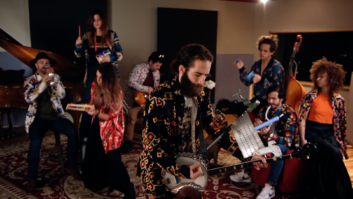
He and Vargas invited a few composers, most fellow Berklee alums, to work out of the facility in 2018, allowing one and all to expand their networking opportunities. At the end of 2019 Vargas went off on his own to pursue his own music production and performance goals, though the two remain friends and collaborators.
That same year, just a few months earlier while at the Mix Presents Sound for Film & Television event on the Sony lot, Ozcan ended up talking to “a guy from Netflix,” where it really hit home that Dolby Atmos masters were a required deliverable, same with Amazon, Hulu, HBO and others. The pipeline was overflowing with content, and there weren’t a lot of mid-level facilities focusing on Dolby Atmos Home certification. Even before the pandemic, Ozcan saw the living room as his target market.
On the same day, he approached Ziv Gross at Streamline Systems Design, who in a previous life at GC Pro had helped Ozcan set up his 5.1 room and was now directing business development at the integration company. Streamline had provided the integration for many of the Atmos rooms at Sony, as well as many others around town. Things started to move quickly after that, and Gross and Streamline engineer Josue Catalan, a former music mixer from Chile, were soon walking around The Record House looking at ceilings and walls.
“It was a pretty good room size-wise,” Gross recalls. “The only two issues we had with the room were the ceiling height and a window. Once we talked to Dolby about the possibility of getting this room certified, the main problem became the ceiling height.”
It’s a myth that you need a big room to mix in Dolby Atmos, as the format tends to translate up and down pretty well; but you do need to meet minimum height requirements to be certified, and The Record House was on the edge of acceptability. Because the room had been a studio, the walls and floors were solid and the speakers could be mounted on brackets. To work with the ceiling, the team decided to “dig up” and soffit-mount the four JBL 705s above the mixer.
“It was literally inches from the actual roof, so there was not too much space to be able to build the soffits, engineering-wise,” Catalan says. “It would have been much easier to aim with mounting brackets, but it ended up pretty slick with the soffits and we pulled it off. In a room this size, we were aiming for the home, the near-field environment. The height is there.”
Another common problem in any small-room, near-field environment is dealing with low frequencies. The math is difficult to resolve when dealing with long waves and volume. Initially, to complement the JBL 708s across the front and the JBL 705s for surrounds and ceiling, controlled by a JBL Intonato monitor controller, Ozcan had a single JBL 4645C sub. By the time the lockdown began to open up and Ceri Thomas made a first field visit for Dolby, it was clear that a second sub was needed.
“We realized by June that I needed a second sub, tuned differently, for the LFE and bass management,” Ozcan says. “So we added a second one for bass management.”
“We started with one sub, and the reason for that is when you are looking acoustically at a small room with multiple subs, you’re exciting the room,” adds Catalan. “But one of the things we noticed was that on some of the content the bass management and LFE channels were basically working against each other, and that’s when you started having the drop in level. With the second sub, we are able to have separate channels and we’re not going to excite the room. So that’s what we did. And we were able to get that put in before Dolby came back in to get the room certified.”
The final tweaks involved adding Dante connectivity by setting up the Focusrite RedNet interface in and out of the Dolby RMU, with an additional RedNet 16R to handle analog input, as well as tielines to the live room on the first floor. A keyboard, rather than a console, sits at the sweet spot so that, as Ozcan says, “You can write and mix in the room; I wanted it to be multidisciplinary.”
DHDI founder Hanson Hsu stepped in for acoustical consultation and presented Ozcan with a demo of his ZR Cloak, which surrounds three sides of the speaker to eradicate first-order reflections. The walls and ceiling are treated with DHDI’s ZR MicroTwin acoustic products.
Mixing for the Home
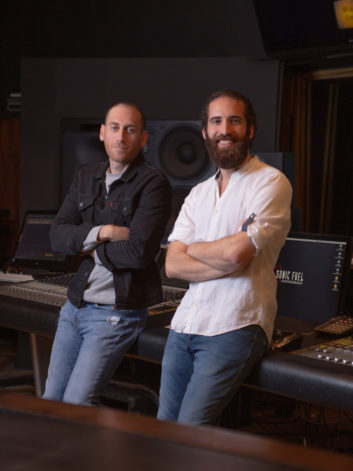
Flexibility is the name of the game today. While the impetus for Ozcan building the room was rooted in post-production, by June of 2020 he began thinking about immersive music, too. He found that outside of Capitol, Blackbird, PMC’s studios and a few others, there weren’t actually that many facilities focusing on music. Then when Avid came out with Avid Play, making it easier for independents to deliver Atmos tracks to streaming services, his thinking coalesced: It’s all about the living room, all about home entertainment.
“We are a music company, and music is what I’ve been doing for the past seven or eight years,” Ozcan says. “So when Ceri of Dolby started talking about how this room could work equally well for music mixing, it was like the light bulb went off. I want a composer to be able to compose, an engineer or producer to produce, a sound designer to design. And then we can mix.
“I actually find music to be a better way of explaining what the medium is,” he concludes. “When I’m hosting listening sessions, sitting back on the couch, and people hear, for example, Rocket Man, and that chorus hits—it’s like an explosion. I’ve literally had multiple people turn around and show me the goosebumps.”

